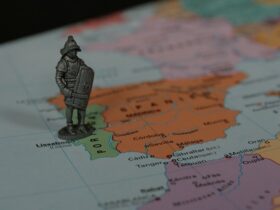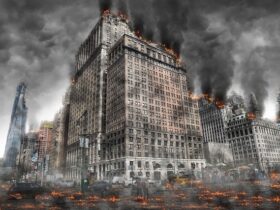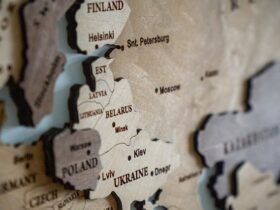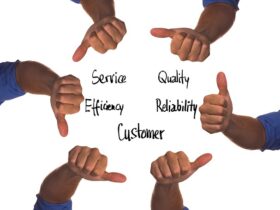The pandemic turned our lives upside down, leaving behind echoes of change that molded anew the way we live, work, and dream. One of the deepest transformations lies in how we look upon the offices that once buzzed with chatter and coffee breaks fell silent. But from this quiet, a new vision was born redefinition of what an office can be. This is a story of the workspaces changing in the post-pandemic world, a story of resilience, innovation, and hope.
The Evolving Workspaces: When a New Era Dawns
The office, as we knew it, was a synonym for routine, structure, and tradition. Desks aligned neat, humming fluorescent lights, and cubicles separated conversations. However, the pandemic was one force of disruption to break molds and invite us into reimagining workspaces.
As millions learned to work from home, what we discovered was not quite so expected freedom. The home office was a comforting sanctuary where efficiency seemed to follow work, showing us that work did not have to be confined to unyielding walls. Yet, the longing for human contact remained. The future of workspaces is about merging these two worlds—blending flexibility with collaboration, and freedom with belonging.
What the Post-Pandemic Workforce Wants
Employees have spoken through their choices, not surveys. They want flexibility, safety, and meaningful connections. Here’s what the modern workforce wants most :
Hybrid Models: A mix of remote and in-office is the best of both worlds.
Personalized Spaces: Workstations that cater to individual needs, be it ergonomic chairs or quiet zones.
Technology Integration: Seamless tools for both remote and in-office collaboration.
Well-designed spaces that foster physical and mental health through such applications as biophilic designs or mindfulness rooms are now becoming considered under wellness-centric design principles.
The Hybrid Workspace: A New Normal
Imagine walking into an office, feeling that the air is a bit lighter, the plants cascade from each corner, and natural light dances across the room. This is space not just to work in but for creativity.
Hybrid workspaces represent the love child between working remotely and the traditional office. They concede that not every task requires an office chair, but at the same time, not every meeting belongs on Zoom. These spaces are designed to facilitate collaboration when needed and support quiet focus when it is time to deep-dive into the tasks.
Features of a Hybrid Workspace:
| Feature | Description |
| Flexible Seating | Hot desks and shared spaces for dynamic team interactions. |
| Technology-Driven Collaboration | Video conferencing tools, virtual whiteboards, and smart rooms. |
| Wellness Zones | Meditation areas, fitness hubs, and outdoor workspaces for mental clarity. |
| Adaptable Layouts | Modular furniture and convertible spaces to suit different needs. |
The Role of Technology in Redefining Workspaces
Technology is not just a supporting character; it is the lead in the story of future workspaces. From smart desks adjusting to one’s posture to AR tools that piece together remote teams, innovation weaves magic into everyday working life.
1. Virtual Collaboration: A place like Microsoft Teams and Zoom doesn’t stand still but instead evolves to immersive experiences such as virtual avatars and 3D meeting rooms.
2. Smart Office Systems: Imagine the ability to walk into a building and have AI work the lights, temperature, and even function coffee machines according to your preferences.
3. Security in a Digital Age: As more and more people work from home, cybersecurity becomes paramount. Advanced encryption methods protect sensitive data in secured cloud systems.
Where technology not only increases productivity but also creates an experience in the workspace, making it safer, and more human-centered.
Personal Touches: Stories of Change
During the pandemic, my dining table was a command center of productivity. Chaotic yet free. But coming back to an office redone with cozy breakout zones, with plants breathing life into every nook, felt like home. These stories of adaptation remind us that the future of workspaces is not about perfection but about people.
Sustainability in Workspace Design
As the world wakes up to ecological challenges, the future workspace has got to be green-literally and metaphorically. Sustainability is fast becoming one of the key pillars in office design, driven by the endeavor to use eco-friendly materials and reduce energy and waste.
Green Workplace Initiatives:
- Solar Power Integration: Offices that use renewable energy minimize their carbon footprint.
- Biophilic Design: Using plants and natural materials to connect employees with nature.
- Waste Management Systems: Recycling initiatives and the reduction of single-use plastics.
- Sustainable Materials: Sustainable materials for interiors include recycled wood, bamboo, and low-VOC paints.
A workplace that values the environment encourages employees to do the same, establishing a culture of responsibility and innovation.
The Emotional Landscape: Designing Spaces That Heal
Beyond desks and devices, workspaces need to touch the soul. The pandemic was an emotional seesaw, and today workers are looking for an environment that heals. This is where emotional design steps in:
- Reflective Quiet Corners: Areas for quiet reflection where employees can take a breather and recharge.
- Art and Creativity Zones: Walls full of color, stimulating art, and means to bring creativity to life.
- Inclusive Spaces: Workplaces that showcase diversity through accessible designs and cultural representations.
The emotional workplace acknowledges its people. And such an attitude creates a positive trickled effect of productivity and happiness in return.
Challenges in Redefining Workspaces
Change is never easy. In redesigning the workspaces, a couple of challenges arise:
Budget Constraints: Indeed, not every organization can afford to transform overnight. Employee Preferences: Diversified needs and expectations need to be carefully considered. Technology Gaps: Not everybody is equipped with the kind of toolsets available on their desks, and this could be place-dependent. These may be daunting, yet these are opportunities for innovation, adaptation, and growth.
How Leaders Can Lead a Workspace Revolution
Well-being, flexibility, and inclusion-inside and outside-are driven by leadership. It is the well-being of their team that a leader should prioritize, and upon which thrives an entire organization. It’s not about what you say, but what you do: needed flexible hours, diversity championed, or using the wellness spaces yourself.
Future-Proofing Workspaces: Trends to Watch
The future of the workspace is about constant motion. Below is a snapshot of what is to come:
- Hyper-Flexible Designs: Offices that morph into event spaces, coworking hotspots, or collaboration zones.
- Smart productivity tools: from scheduling assistants to mood-enhancing lighting. Global collaboration spaces: spaces for international groups of employees enabled with VR and AR.
New Workspace Vision: Where Dreams Meet Productivity
It’s not about where we work, but how we will feel when working: an atmosphere in which innovation blooms, connections deepen, and employees thrive. Imagine a world where the workspace uplifts rather than drains-one that inspires every turn and supports well-being at every detail. That’s the dream we’re building a future that cares.


































Leave a Review